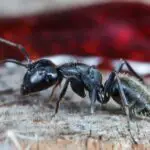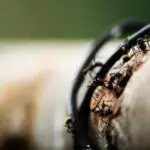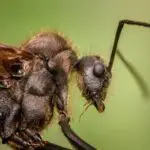Do Ants Have Blood?
Unlike humans, ants do not have a blood circulatory system. Instead, they have a fluid called hemolymph. This is a type of fluid that carries nutrients, waste, and chemicals throughout the body of the insect. It also provides them with the ability to survive in hot environments.
Hemolymph is a storage pool of chemicals that ants use for a variety of purposes. It regulates lipids, proteins, and pH. It is also a key part of the ant’s immune system. It helps to heal wounds, recover from injuries, and maintain an optimal temperature inside the insect’s body.
The ant’s circulatory system is open. This type of circulatory system allows the insect to adapt to hot and cold conditions. It is also beneficial because the fluid does not move through the arteries. This means that it can freely reach all parts of the body.
An ant’s blood is not red in color, because it does not contain red blood cells. It does contain hemocyanin, a copper-based protein. It also contains cryoprotective agents that make them resistant to cold.
Insects also have a breathing system, and this is important because it allows for the exchange of gases and oxygen. The insect’s tracheae are small tubes that extend throughout the body. Each ant has more than one throat, which are called spiracles. In addition, they have a network of tiny tubes called tracheae that supply oxygen to the insect.
The circulatory system of ants is also different than the circulatory system of vertebrates. Because of this, it takes longer for the blood to circulate through the ant’s body. The ant’s blood pressure is also low, due to the absence of veins.








